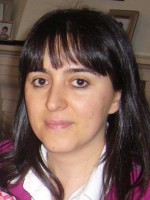abstract
The generation of compressional waves in liquids can change the resonance frequency of a quartz crystal, although this factor has been ignored in most of the published works on piezoelectric quartz crystals operating in liquid media. In fact, oscillatory behaviour of the frequency of resonance is seldom reported, although we believe it is not rarely perceived by investigators with data acquisition systems. These compressional waves, that propagate normal to the quartz surface, can lead to systematic errors in analysis when the frequency of oscillation is the analytical signal. With this work we intended to show that compressional waves are not always an annoying phenomena and a source of problems but that they can be useful in chemical analysis. The work is focused on the analytical problem and intends to show the advantage of using the period of the signal fluctuation in chemical analysis. Series frequency and period of its fluctuation were both monitored in the presence of several organic pollutants in water: ethanol, acetone, tetrahydrofuran, tetrachloroethylene and chloroform. Quantification based solely on the series frequency faced some difficulties, as different compositions could give rise to the same signal. The additional information obtained by measuring the period of the signal fluctuation allowed to establish the concentration of the solution without ambiguities, and can also, in particular situations, allow to identify the pollutant. Besides, for waters contaminated with a known pollutant in low concentrations, when ambiguity in concentration range is not an issue, sometimes, higher sensitivity was obtained measuring the wave periodicity rather than the series frequency of oscillation. (C) 2010 Elsevier B.V. All rights reserved.
keywords
SHEAR-MODE RESONATORS; PIEZOELECTRIC QUARTZ-CRYSTAL; ORGANIC POLLUTANTS; DRINKING-WATER; ONLINE DETECTION; FREQUENCY; LIQUIDS; SENSOR
subject category
Chemistry; Electrochemistry; Instruments & Instrumentation
authors
Verissimo, MIS; Oliveira, JABP; Gomes, MTSR
our authors
Groups
acknowledgements
This project was financed by the FCT and CESAM.


